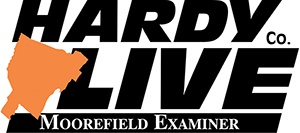Urologist, pediatric anesthesiologist, dermatologist, pulmonologist and general surgery featured in latest magazine
LEWISBURG, W.Va. — At its core, the West Virginia School of Osteopathic Medicine (WVSOM) has always been driven by one purpose — to educate students to pursue careers as primary care physicians in rural and underserved areas, especially in the Appalachian region. That principle is part of the school’s mission. It’s the foundation on which the entirety of the osteopathic medical school’s educational program is built. But students who graduate from WVSOM are prepared for careers in all specialties.
WVSOM recently featured a group of its specialists in its award-winning magazine.
Whether students are interested in problems men and women face with their urinary tract, or they want to understand the intricacies of how the brain responds to trauma, WVSOM provides the medical knowledge and clinical expertise to all students necessary to enter the residency programs they envision for themselves.
WVSOM’s Class of 2023 had a 100 percent residency placement rate. While most of those graduates still sought primary care specialties — 59 percent of them chose family medicine, internal medicine, pediatrics or internal medicine-pediatrics — non-primary care specialties such as emergency medicine and surgery also proved attractive to graduates.
Abigail Frank, D.O., WVSOM’s assistant dean for graduate medical education, said that while historically students have been drawn to WVSOM for its emphasis on primary care, the institution excels at preparing students for other specialties.
“Students come to WVSOM because they have a passion for the underserved, and they address underserved populations through various specialties,” she said. “Many of our students are interested in primary care, and we also have students who are interested in surgery, anesthesia, radiology and emergency medicine. Then we have folks who go into internal medicine, which is primary care. Internal medicine also allows our alumni to go into fellowships like cardiology, nephrology or oncology.”
Nationwide, more residency spots are available in primary care specialties than in non-primary care specialties. Frank explained that some internal medicine residency programs may take 30 first-year residents, whereas a urology residency program may only take four. But competitive residency programs shouldn’t deter ambitious medical students looking to fulfill their dreams.
“At WVSOM we do a fantastic job of career advising, which begins in the first year with our coaching program,” Frank said. “If we have an applicant who is interested in a competitive specialty where there aren’t many residency spots, we ensure they’re doing all the things they need to do to be competitive. To get into a competitive specialty, you have to be willing to give up a lot. I’ve had applicants willing to make those sacrifices, and most of that is less time doing what you want and more time studying and conducting research.”
At WVSOM, internal medicine, family medicine and emergency medicine — the latter of which is not considered a primary care specialty — are the three most popular residencies among graduates in the past decade. A total of 214 WVSOM graduates have entered emergency medicine residencies since 2014. Pediatrics and psychiatry follow, with 134 and 80 WVSOM graduates in the past decade, respectively.
One trade publication reports that psychiatry will be the fastest-growing physician specialty by 2031. The projections are from the Bureau of Labor Statistics, collected by Becker’s Hospital Review, a medical industry magazine supplementing government data and rankings. Other specialties expected to see the greatest employment increases by then are pathology, radiology, surgery, emergency medicine and family medicine.
“We certainly have a mental health care crisis on our hands, so I think the need is great right now,” Frank said. “In our local community, it’s a three-to-six-month wait to see a psychiatrist. We see a lot of primary care physicians treating psychiatric conditions because we can’t wait for them to get in to see a specialist.”
Emily Huffman, a second-year WVSOM student who is president of the school’s Neuro-Psych Club, said she has always been interested in psychiatry. Her club encompasses psychiatry, neurology and addiction medicine.
“Psychiatry and general surgery are popular specialties among my classmates outside of primary care,” she said. “Both of these specialties are similar to primary care in that they are broad, have a variety of fellowships and are needed everywhere, especially in rural areas.”
Huffman said she appreciates that the school prepares students to pursue any specialty.
“Primary care needs more doctors, and medical schools should do their best to replenish those spots. But I have never felt WVSOM was pushing us into primary care,” she said.
UROLOGY
WVSOM has a reputation for preparing physicians for careers in primary care, but the school also prepares students to be successful in any specialty. This was the case for James P. Tierney, D.O., MBA. He arrived at WVSOM in 1976 with the idea that he might want to be a general surgeon — until an opportunity for a urology residency changed his direction.

Tierney, a 1980 WVSOM graduate, has been a urologist at Charleston Area Medical Center (CAMC) since 1987. His postgraduate experience included an internship at Pinellas Park Hospital in St. Petersburg, Fla., followed by two years of general surgery at CAMC and a four-year urology residency at the University of Pittsburgh before returning to CAMC to practice.
The combination of medical and surgical elements of urology, along with its use of technologies, make it one of the most sought-after residencies in the country, Tierney said.
“Medical students find the evaluation and management of the medical and surgical elements of urology attractive. The combination of open surgery, endoscopic procedures and robotic surgery contributes to the specialty’s popularity,” he said.
Tierney and CAMC officials realized the need for urologists in West Virginia, so he and other physicians began the hospital’s residency program in 2006.
Nine WVSOM graduates in the past 20 years have gone through CAMC’s urology residency program and found careers in the specialty, six of whom currently practice in West Virginia. The nine alumni include Cordell Davis, D.O., Samuel Deem, D.O., Brian DeFade, D.O., Ryan Fitzwater, D.O., MBA, Joshua Lohri, D.O., MBA, L. Faith Payne, D.O., Stephen Phillips, D.O., Jason Riley, D.O., and Roger Robertson, D.O.
Students need to know that when they finish medical school with a D.O. degree, any specialty is open to them, but when they apply for hard-to-get residencies, they are competing for those positions nationally, Tierney said.
“Most urology residencies match only two to three students a year for the five-year postgraduate program. You must have a competitive application that includes good board scores, research activity, good grades and letters of recommendation,” he said. “In the summer and fall of the student’s senior year, it is essential to secure several two-to-four week rotations at hospitals with residency programs. These rotations are the opportunity to put their best foot forward to network. To demonstrate how competitive the process is, last year, we received 256 applications for two spots.”
PEDIATRIC ANESTHESIOLOGY
On any given day, Heather Phillips, D.O., is responsible for anesthetizing pediatric patients who may range from 600-gram newborns to 500-pound teenagers. Her tasks also include preoperative evaluations and discussions with anxious parents, and procedures such as placing IVs, intubations, epidurals and regional blocks.

“Giving anesthesia does not only mean ‘putting someone to sleep.’ It means keeping them alive and maintaining hemodynamic stability while keeping them asleep,” she said. “I also manage acute or chronic pain, mainly with pharmacologic measures, once surgery is complete.”
Phillips has worked for 15 years as an attending pediatric anesthesiologist at East Tennessee Children’s Hospital in Knoxville, Tenn. She and her team of certified registered nurse anesthetists provide anesthesia for procedures such as brain tumor excision, appendectomy and tonsillectomy, often in three different operating rooms simultaneously.
Phillips said the team care model used by her hospital is built on trust.
“A lot of anesthesiologists will say that our days are spent putting out fires. This means a day spent assisting with things that have the potential to become critical events. For example, intubating a difficult airway, obtaining IV access in a severely dehydrated and critically ill baby or directing which vasopressors to infuse to improve cardiac output. We collaborate with surgeons, critical care physicians and other specialists to optimize our patients before coming to the OR, and we also manage in and out of OR resuscitations, though that is not a common occurrence,” she said.
After graduating from WVSOM in 2003, Phillips completed an anesthesiology residency in 2007 and a pediatric anesthesiology fellowship in 2008 at the University of Michigan in Ann Arbor.
Phillips said that being able to get a child who is not expected to survive surgery through the operation is an indescribable feeling and the most rewarding part of her job.
She recounted a recent surgery on a young adolescent whose diagnosis meant a potentially risky procedure. Before the operation, Phillips told the patient she would do everything in her power to bring him back to his family. After the surgery went well and the patient began waking up, his words to her stood out.
“He grabbed my hand and with tears in his eyes said, ‘Thank you so much, doctor. You did it.’ It made me tear up in the moment, and then again when I told his dad what he had said, and his dad asked if he could give me a hug. There is no better reward than a hug from a grateful parent,” Phillips said. “Some days I actually get to save a child’s life, and that’s the coolest thing ever.”
DERMATOLOGY
Michelle Endicott, D.O., of WVSOM’s Class of 2001, has bad news and good news for aspiring dermatologists. The native of Point Pleasant, W.Va., who in 2005 founded South Charleston Dermatology, said there are far more medical students interested in the profession than opportunities to enter it.

“You have to be at the top of your class. You have to do really well on your board exams, and these days you have to do research and present dermatology cases,” Endicott said. “Somebody who’s in the middle of their class might make a great dermatologist, but it’s probably going to be difficult for them. It’s unfair, but there just aren’t enough residencies.”
But for those who do enter the specialty, the rewards are plentiful.
“I get to see all age groups. I might see a newborn in one room and a 92-year-old in the next room. That’s great, because it keeps you from getting bored,” she said. “And even though I’m a specialist, I’m in the trenches along with our primary care doctors serving the people of West Virginia. Throughout the week, I’ll get texts from physicians asking, ‘Will you look at this rash?’ or ‘I’ve got this melanoma. Can you work it in?’”
After graduating as one of the top five students in WVSOM’s Class of 2001, Endicott completed an osteopathic rotating internship at Charleston Area Medical Center and a dermatology residency at Case Western Reserve University. She said the specialty requires four years of residency work. In the first year, residents study internal medicine, surgery or complete a rotating internship. For the remaining three years, the focus is purely dermatology.
The profession changes rapidly, requiring dermatologists to keep up with advances in pharmacological treatments. Endicott said that in the approximately two decades she has worked in the specialty, she’s seen dramatic improvements in treatments for conditions that previously were debilitating or fatal.
“We now have medications that can make real differences in people’s lives. We can take someone with psoriasis and allow them to only have to think about their disease, say, once a month when they take their medication. We can dramatically improve a patient’s eczema. And people are living much longer with melanoma. Today even metastatic melanoma is being treated with immunotherapy, drastically changing the patient’s prognosis,” she said.
Endicott said she enjoys working with students on dermatology elective rotations — even the ones with misconceptions about her profession.
“Sometimes when people rotate here, they don’t realize how much medicine we do. They think we tell people what kind of makeup to use, and we don’t actually do that,” she said.
PULMONOLOGY/CRITICAL CARE
If you think pulmonologists always focus on a patient’s lungs, you’d be wrong. Tom Takubo, D.O., of WVSOM’s Class of 1999, said many people don’t realize how intimately the lungs are intertwined with other organs involved in the breathing process.
“As a pulmonary specialist, you do learn the lungs at a much greater level,” Takubo said. “But the body has a lot of redundancy, and you can sometimes lose a third of your lung function before you notice a problem. When patients come to me, I’m often diagnosing heart problems, because the lungs are just one piece of the process. Lungs put oxygen into the blood, the heart has to push that blood, the blood has to carry it, and then it has to be able to jump from the blood to the tissue. If there’s a problem in any of those areas, it’s going to make you short of breath. So figuring out why oxygen isn’t getting there often falls to a pulmonologist.”
Takubo, a pulmonologist and critical care specialist, is a founding physician and partner in Pulmonary Associates of Charleston, W.Va., a lung center that was the first in the state to incorporate electromagnetic navigation bronchoscopy (ENB), a procedure that changed the way lung cancer is diagnosed. ENB allows physicians to more accurately guide endoscopic tools through the bronchial pathways.
“In the past, if you had a spot on your lung, most of the time they would have to remove a piece of the lung to biopsy it,” Takubo explained. “Half the time it was benign, but lung cancer is so dangerous that you didn’t take a chance. Because there are so many twists and turns as the airways divide, a bronchoscopy only gave you about a 14 percent chance of getting where you wanted to go. When ENB was introduced in 2008, it was a game changer. If someone had a suspicious-looking spot on the lung, you could now triangulate your exact position and get to the spot without cutting the person open.”
Takubo, who is also majority leader for the West Virginia state Senate and recently became executive vice president of provider relations for the West Virginia University Health System, completed an internal medicine residency with WVU and a pulmonary and critical care fellowship at East Tennessee State University.
He said it’s especially important that medical schools produce physicians who become pulmonologists in the Mountain State, where, according to the West Virginia Division of Tobacco Prevention, 25.2 percent of adults are smokers, compared with 15.5 percent nationally. Takubo said that’s just one of several reasons the demand for the specialty is high in the state.
“West Virginia has the highest incidence of smoking in the nation, and we have the coal industry, which can be damaging to the lungs because of silica dust. We’re also in the ‘Histo belt’ — histoplasma capsulatum is a fungus dropped by birds and bats, and it ends up in the soil. It causes histoplasmosis, which leaves nodules in the lungs that doctors have to do imaging on because they look identical to lung cancer. All these things keep pulmonologists busy,” he said.
GENERAL SURGERY
As chief general surgery resident at Western Reserve Hospital in Cuyahoga Falls, Ohio, Ray Harron Jr., D.O., has learned that the specialty is not for everyone. But for physicians who like seeing results quickly — and who don’t mind the potentially long hours — the WVSOM Class of 2019 graduate said general surgery is an ideal career path.

“On most mornings, I’m in the hospital by 5:30 or 5:45. Rounding is done by 6:30. Cases start at 7:30 and they go until the work is done. I’m usually at the hospital until 5, 6 or sometimes 7 at night, and if I’m on call on the weekend, it’s for a 14-day stint,” Harron said. “It’s challenging, but when you take out an appendix or an inflamed gallbladder, the patient feels better almost immediately. You can see within hours that it worked, and I enjoy that.”
The son of a D.O. neurosurgeon and a D.O. neurologist, Harron received a Bachelor of Science degree in biology from Virginia’s University of Richmond before attending WVSOM. He initially hoped to become a cardiologist, but the more time he spent with his father in the operating room, the more he was drawn to general surgery.
“I started to hang out with my dad more when we had breaks, and I found that I liked the camaraderie in the OR. I liked that you’ve got multiple team members — anesthesia, surgery, nursing — all working together to fix a problem,” he said.
After completing his medical degree, Harron was selected for a residency at Western Reserve. During his residency, he has performed procedures such as abdominal surgeries, thoracotomies and craniotomies. He explained that general surgery requires a five-year residency, but physicians who want to further specialize can pursue fellowships.
“General surgery is an excellent path if you have multiple surgical interests. What most hospitals are comfortable with a general surgeon treating is abdominal pathology,” Harron said. “But if you find that you have a particular interest as you move through residency, there are fellowship options that allow you to focus on specific types of surgeries.”
Despite the hectic lifestyle that can accompany being a general surgeon, Harron said the rewards outweigh the sacrifices. “I love being able to fix acute problems. It’s humbling and it’s a privilege. That’s why surgery is better than anything else,” he said. “Don’t get me wrong: I complain as much as anybody about getting up at 5 in the morning for the 20th straight day. But when it comes down to it, I wouldn’t choose








